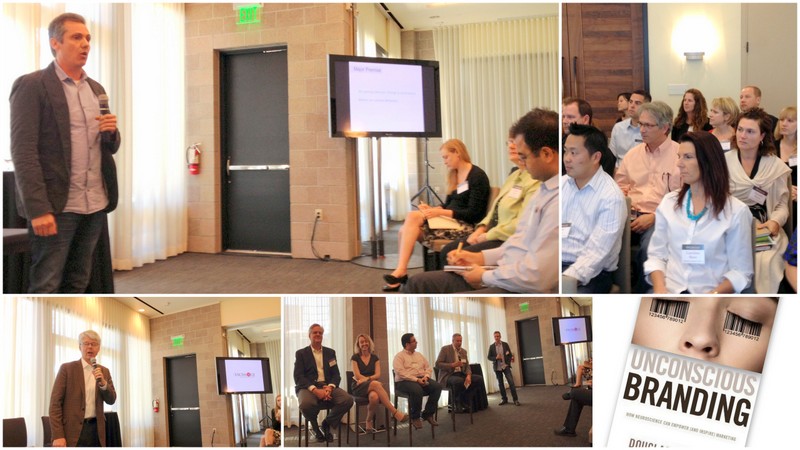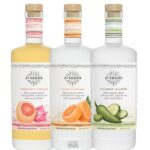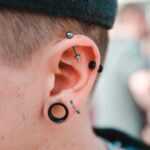I recently hosted a wine marketing conference near Napa for senior level marketing professionals called The Exchange. Sponsored by Nomacorc, the theme of our conference was to explore the contradiction that what a consumer says is remarkably different from what they do. Our goal was to explore the ways in which observation can play a critical role in marketing as well as understanding the role of the unconscious in branding. Experts from within and outside the wine industry participated.
Dr. Norman Stolzhof is a cultural anthropologist who spoke to the audience about his experience using observation and ethnography as an important technique toward understanding marketing. One of his clients, Randy Adis from Pepsico joined the session and together they discussed a case study related to one of the joint ventures Randy manages with Lipton Ice Tea. Also speaking was Douglas Van Praet, the author of Unconscious Branding who spoke to the audience about the 7 steps toward an approach to marketing that was rich with insight and deeply inspiring. You can read my review of Doug’s book here along with an outline of his process.
Finally, we had a panel conversation with very senior marketing executives including Dale Stratton from Constellation Brands, Martin Johnson from Chateau St. Michelle, Kim Kulchycki from BevMo and Gazmend Alushi from Facebook. The panel discussion was moderated by Douglas Van Praet from Deutsch LA and was rich with insight, anecdotes and some imaginative thinking. The conference was incredibly stimulating and bursting with rich ideas.
I’d like to share five key ideas that I took away from the conference as it relates to marketing in general, not just for the wine industry.
OBSERVE DON’T ASK
 |
| Observe don’t Ask |
If you are a marketer and you are trying to understand what motivates someone to act, watch don’t ask. Observe them engage with your product or utilizing your service. Asking questions is fraught with problems since most of us have a difficult time understanding our own behavior let alone expressing it to others. Why we behave is like an iceberg- you only see the tip of it above the surface and so much lie below in the subconscious.
What leads a consumer to buy one brand of wine over another? What motivates someone loyal to a brand to switch and try something new and different? Like a poker player who has a “tell” that indicates what they are going to do next, do consumers provide non-verbal signals of pleasure or dislike that can been witnessed but not really talked about? We behave in ways that we can’t articulate and don’t understand so it shouldn’t surprise us that consumers have a hard time articulating a preference. So given the choice, can you observe real people using your product or service?
What leads a consumer to buy one brand of wine over another? What motivates someone loyal to a brand to switch and try something new and different? Like a poker player who has a “tell” that indicates what they are going to do next, do consumers provide non-verbal signals of pleasure or dislike that can been witnessed but not really talked about? We behave in ways that we can’t articulate and don’t understand so it shouldn’t surprise us that consumers have a hard time articulating a preference. So given the choice, can you observe real people using your product or service?
DISRUPT THE PATTERN
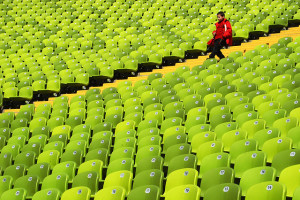 |
| How do you disrupt a pattern? |
A core idea from Douglas’ presentation centered on this notion of disrupting a pattern to gain attention. From Seth Godin’s idea of a purple cow standing in a field to a yellow stop sign, something unexpected can gain your attention. It forces you out of your unaware self to shock you back to being present and in the moment. As a category, wine suffers from a rush to blend in together where consumers find a difficult time distinguishing among the feared “wall of wine”. Since most wine is packaged in limited bottle types for efficiency, wine brands give away an important packaging cue. Think of all the special shapes in spirits like Amaretto di Saronno or Jack Daniels. Spirits have rich brands that you can find with your eyes closed once you know their unique package shape. How are you disrupting the patterns in your market category?
 |
| Are you sharing the on ramp with both novices and experts? |
NOVICES AND EXPERTS BOTH DRINK WINE
Most products require an on ramp to allow new consumers easy access into a category. The consumer may be tentative and experimental and they want to learn about your products. Are you welcoming and friendly or do you use language that is oft-putting? Wine tends to be like attorney’s using special language that intimidates instead of educating you. Wine uses descriptors that can make it hard for a new fan to get past the front door. (You don’t know what terroir is— OMG!) Industries need new users and the next generation is going to have different set of rules than the one before. Can your entrance ramp be friendly enough to expand the category and simply lead the consumer into your world? What can you do to help minimize the insecurity of consumers around decision making?
CHANNELS MATTERS
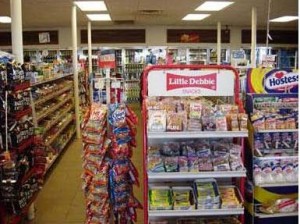 |
| Yes it is a problem when your expensive wine brand is sold next to the Little Debbie’s |
When a luxury or high end brand is distributed everywhere, what does that say about the product? Can a brand show up at Walgreens and BevMo when its new and being launched? What does a wine sold at a convenience store say about the brand and it is possible to also be sold a fancy restaurants? There was some rich conversation at our conference about how in a rush to reach sales goals, brands can be weakened based on the where the product is sold and through a race to “hit the numbers”. How thoughtful is your launch plan about where the product may show up?
Over the last 20 years, even among economic dips, the wine industry continues to grow and expand. The U.S. market is the #1 market globally in total wine consumption surpassing France and Italy. Although per capita consumption is still far behind those countries, the U.S. consumer is drinking more wine, using it at more occasions and talking about it online through every social media platform. Yes there is room for innovation, but it is okay to give a few “pats on the back” to the industry writ large.
Thought leaders need to keep pushing from different angles to keep finding ways to grow and improve the quality of the product and the range of brands representing different segments and interests. So go ahead and celebrate some of the industries’ successes. That affirmative spirit was ever present in our speakers and lent an encouraging note to the conference.
Thought leaders need to keep pushing from different angles to keep finding ways to grow and improve the quality of the product and the range of brands representing different segments and interests. So go ahead and celebrate some of the industries’ successes. That affirmative spirit was ever present in our speakers and lent an encouraging note to the conference.
So as I fish out my corkscrew from my drawer, I think I’ll open up a nice bottle of wine to celebrate the moment.
